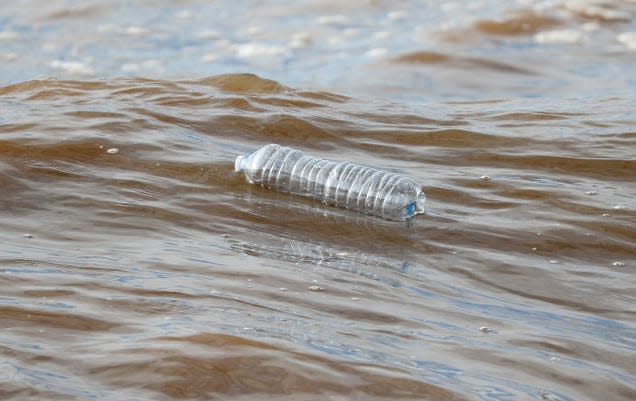Get ready to hear a lot more about the proposed UN ban on plastic pollution

As the environmental consequences of human dependence on single-use plastics become increasingly clear, the United Nations is considering an all-out ban on plastic pollution.
In March 2022, UN member states heeded a call for action from environmental groups and took the first of several steps towards a formal agreement when they committed to the ambitious target of delivering by 2024 a treaty targeting the end of plastic pollution by 2030. The goal is to eliminate environmental pollution from plastic, which is on track to double by 2060, as well as to reduce the amount of greenhouse gas emissions related to the plastic lifecycle, which are set to more than double by 2060, according to OECD estimates.
Read more
A week-long first negotiating session (INC-1) to lay the foundations for the treaty was held in Punta del Este, Uruguay, in December 2022. But soon, delegates will meet in Paris for a second discussion (INC-2) on the treaty’s content from May 29 to June 2. Three more sessions are scheduled in the next two years. Once an agreement is forged, every UN member country will be invited to ratify the text. Getting to that point is a slow, complex, and laborious process with no guarantees of success. The good news for environmental advocates is that it’s been done before.
One of the most successful examples of a UN-led effort to limit the release of harmful substances delivered results: The 1987 Montreal Protocol on Substances that Deplete the Ozone Layer banned the production and consumption of nearly 100 chemicals that were contributing to the hole in the ozone layer, which is now on track to repair itself in the next four decades.
Quotable: Why the UN treaty on plastic pollution matters
“It is an insurance policy for this generation and future ones, so they may live with plastic and not be doomed by it” —Inger Andersen, Executive Director of UNEP.
Plastic pollution, by UN digits
400 million ton per year: Estimated plastic pollution globally, a figure set to double by 2040
11 million tons: Estimated plastic pollution in the oceans in 2016, a figure set to triple by 2040
$522.6 billion: Size of the plastic production industry globally
4.5%: Share of global greenhouse gas emissions derived from plastic production in 2015
What should the UN treaty on plastic pollution include?
The negotiating sessions aim to achieve a science-based treaty that is legally binding, measurable, and enforceable. Points of discussion, building on the outcome of the first session in Uruguay, include:
✅ Obligations countries should commit to
🚣 Voluntary approaches to go further
💰 Financial resources to back the transition
📍 Local communities’ involvement
⚖️ Provisions for dispute settlement
♻️ Holistic view of plastic’s lifecycle from production to consumption to waste management
🌏 Consideration of marine, land, and water plastic pollution
🤝 Integration with the UN Sustainable Development Goals
The looming battle over the circular economy
Any serious effort to end plastic pollution needs to go hand in hand with the implementation of a circular economy. This means that the production and consumption of an item should take into account its whole lifecycle, particularly the end point of that cycle—ensuring it can feed into the production cycle of another product, removing waste.
It’s no surprise that one of the six legal briefs developed to support the negotiating session in Paris is dedicated to discussing the circular economy in relation to the plastic lifecycle and the need for negotiators to agree on a shared definition of the term.
That’s easier said than done, as discussions around nomenclature are often the most hotly debated in treaties of this scale, where every comma counts. Negotiators must decide whether to adopt an explicit definition, perhaps using existing understandings in US and European Union law as a starting point, or keep the definition implicit, by setting out commonly agreed design principles that would lead to circular product development. A third option would be striking a balance between the two, setting out an explicit definition that still allows for flexibility around the development of future needs and legal, scientific, and technical progress.
The legal brief also cautions against falling for the “rebound effect,” by which increased efficiency and a reduction of environmental harms lead to an increase in energy consumption. Ultimately, the goal is tackling greenhouse gas emissions and preventing further global warming.
Sofia Lotto Persio discusses what should be done about single-use plastics in season 5, episode 5 of the Quartz Obsession Podcast.
🎧 Listen now!
✅ Or find it wherever you get your podcasts: Apple Podcasts | Spotify | Google | Stitcher | YouTube
More from Quartz
Sign up for Quartz's Newsletter. For the latest news, Facebook, Twitter and Instagram.

